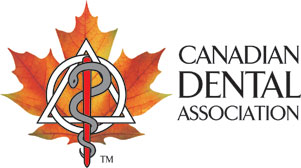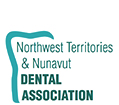Presented in conjunction with:

Parents and teachers can use this experiment to show children how fluoride helps protect teeth from tooth decay. Use the "Printable version" link at the bottom of this page to print copies of this experiment. Adult supervision is recommended for this activity.
Background
Egg shells and teeth have something in common; both can be weakened by acid. When you put an egg in vinegar (a weak acid similar to what causes cavities), it attacks the shell, making it soft and weak. When teeth are exposed to acids in your mouth, your teeth become vulnerable to cavities.
Note to teachers: You may want to create a checklist of the EggSperiment steps on your blackboard or on a separate sheet of paper as a way to involve your whole class in this activity.
Purpose
This experiment shows how you can help lock in the calcium in an eggshell - and your teeth - by protecting them with a fluoride toothpaste.
Time Needed
Five to six days. If you're doing this experiment at school, start on a Thursday or Friday afternoon.
Materials
- Crest for Kids Cavity Protection Sparkle Gel toothpaste
- Glass measuring cup (500 ml / two cups)
- Three or four eggs without cracks - fresh or hard boiled*
- Table vinegar
- Paper towel
- Teaspoon
- Plastic wrap
- Marker or pen
- Clear nail polish
* You only need one egg for the experiment but you may wish to use three or four eggs at one time in case one egg gets dropped.
Preparation
- Let egg warm to room temperature (three hours).
- Empty entire tube of toothpaste into measuring cup.
- Pat down toothpaste with teaspoon to make level and remove any air bubbles.
- Wash your hands.
- Wash the egg with warm tap water and dry it with the paper towel.
- With a marker or pen, mark one side of the egg with a small "X" to show the side that will not be covered (protected) by the toothpaste. Cover the mark with clear nail polish to protect it from the vinegar.
- Place the egg horizontally into the measuring cup, marked side up, so the toothpaste covers half the egg. Make sure the egg doesn't touch the bottom of the cup.
- Cover the cup tightly with plastic wrap and put it in a safe place. Leave it at room temperature for four full days.
Acid Attack
- After the four days, carefully remove the egg with a teaspoon and rinse off all the toothpaste with warm tap water.
- Place the egg on a clean dry surface and let it dry overnight. Wash the measuring cup.
- The next day, pour enough vinegar into the measuring cup to cover the egg.
- Carefully place the egg in the vinegar with the teaspoon.
- Rest the teaspoon on the egg so that the egg remains under the vinegar.
- Gas bubbles will quickly begin to form around, and rise from, the unprotected side of the egg. The shell is being attacked by acid. (eventually bubbles will appear on the whole egg.)
- Leave the egg in vinegar until the unprotected side of shell softens (side with the "X"). This will take from seven to 13 hours. If in seven hours you won't be around to check, remove the egg from the vinegar before you leave, wash it with warm water and leave it on counter overnight. Record how many hours the egg was in the vinegar. When you return, put the egg back in the vinegar.
Results
- After the egg has been in the vinegar for a total of seven hours, remove it and check if the unprotected side has softened by tapping very lightly with your finger. If the unprotected side is still hard, put it back in the vinegar.
- Check every hour or two until the shell has softened. If it has softened, continue to the next step.
- Remove the egg and gently wash it with warm tap water. (Be careful, it may be really soft.)
- Holding the egg in one hand, tap the unprotected side (side with the "X") with your finger or a pen. The shell should be soft and weak. Tap the protected side. The shell should be hard and strong.
Experiment Conclusions
The fluoride in the toothpaste helped to make the eggshell strong, protecting it from the acid in vinegar. Fluoride is a mineral found in nature. It makes the hard, outer layer of teeth (called enamel) stronger.
The unprotected side of the egg (marked with the "X") wasn't protected so the acid in the vinegar was able to eat away at the eggshell. Cavities form on our teeth in roughly the same way. That's why it's important to brush and floss teeth regularly to protect our teeth and gums from cavities.
A cavity is a very small hole that forms on the surface of a tooth. Cavities are caused when sugars in the food we eat and bacteria in our mouths mix together, producing a mild acid that eats away at the enamel on our teeth.
When the outer layer of our teeth is strong, we're less likely to get cavities.











